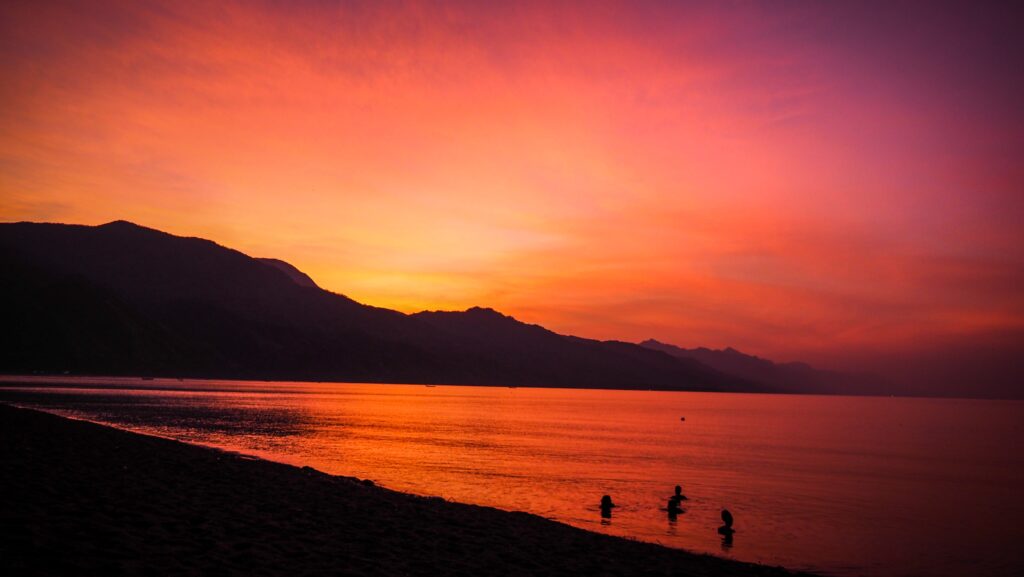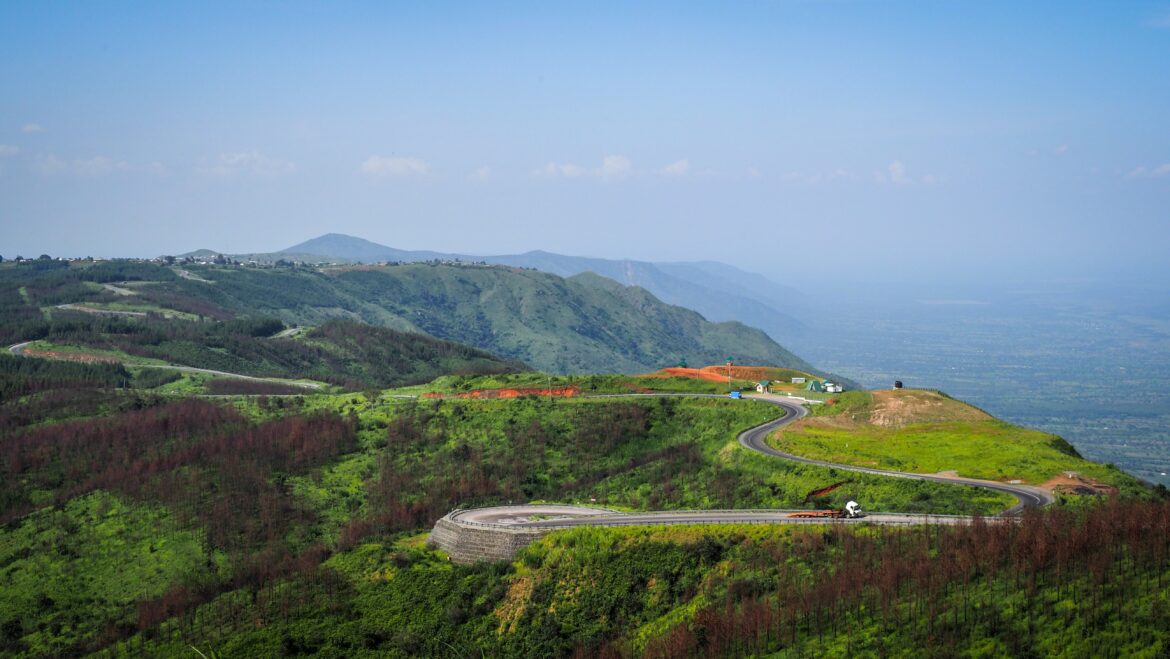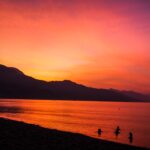Mbeya is a city in southern Tanzania, tucked among rolling hills and mountain ranges in the Southern Highlands. It’s a place that blends natural beauty, colonial echoes, and a strong local identity, making it one of Tanzania’s more quietly interesting urban centres.
Mbeya started as a small settlement in the early 20th century, but its story took off during the 1920s when gold was discovered in the area. That sparked a mini-gold rush and attracted miners, traders, and colonial interests, especially during the British administration after World War I. As a result, Mbeya began to grow, first as a mining town, then as a centre of agriculture and transport.
One reason Mbeya has developed steadily is its location. It sits on the crossroads of several important routes: the TAZARA railway that links Tanzania to Zambia, the road to Malawi, and routes deeper into the highlands. That made it a hub for trade, farming, education, and administration.
Mbeya is home to a mix of ethnic groups, including the Nyakyusa, Safwa, and Nyiha, among others. Each group brings its own traditions, language variations, and ways of life. The city has grown into a multicultural spot where urban life blends with rural customs. Economy and Nature
Farming has been a huge part of Mbeya’s story, especially tea, coffee, bananas, and maize. The fertile volcanic soil and cooler climate give the region an edge in agriculture. It’s also near several beautiful natural landmarks: Mount Rungwe, Kitulo Plateau (often called the “Serengeti of Flowers”), and of course, it’s the gateway to places like Matema on Lake Nyasa.
Tukuyu
Tukuyu is located about 70 kilometres from Mbeya. The soil there is volcanic and super fertile, so everything from bananas to avocados to tea grows like crazy. The town gets misty in the mornings, with mountain views and cooler air than most places in Tanzania.
Similar as it was in case of Mbeya, the area around Tukuyu began to change in the colonial era. First, the Germans (late 1800s to WWI), then the British, saw the potential of this fertile land, especially for cash crops like tea and coffee. The colonial powers introduced new farming methods and built infrastructure, much of which shaped Tukuyu’s economy and layout.
Tukuyu may be small, but it has a strong community feel. The local people are warm and welcoming, and the town still holds onto many traditional customs, like clan leadership and local festivals. Christianity is widespread, but traditional beliefs often blend with modern religion in interesting ways.
Visitors come for the waterfalls (like Kaporogwe Falls), hot springs, and hikes around the surrounding volcanic peaks like Mount Rungwe. It’s not packed with tourists, so it still feels very authentic, like you’re getting a glimpse into the “real” Tanzania, off the main tourist path.
How to get there?
Getting to Mbeya is pretty straightforward, and you’ve got a few solid options depending on your budget, time, and sense of adventure.
By Air:
The fastest way is to fly into Songwe International Airport, which is about 25 kilometres from Mbeya. There are regular flights from Dar es Salaam and sometimes other major cities like Zanzibar or Arusha. Once you land, you can grab a taxi or local transport into the city. It’s an easy drive, usually under an hour.
By Road:
If you’re up for a long ride or want to see more of the countryside, road travel is doable and actually pretty scenic in parts. Long-distance buses connect Mbeya to cities like Dar es Salaam, Iringa, and even as far as Dodoma. The ride from Dar takes about 10–12 hours, depending on road conditions and stops, so it’s best to go with a reputable bus company for safety and comfort.
You can also drive yourself if you’re renting a car. Just be ready for some winding roads through the mountains, especially as you approach Mbeya.
By Train:
The TAZARA railway (Tanzania-Zambia Railway) runs from Dar es Salaam all the way to Kapiri Mposhi in Zambia, passing through Mbeya. It’s slower than flying or taking a bus, but it’s a unique way to see the landscape and meet people along the way. It’s a throwback kind of experience, rustic but memorable.
From Mbeya to Tukuyu:
You can catch a local bus or minibus from the main bus terminal in Mbeya town. It’s an affordable option and commonly used by locals. The ride usually takes 2 to 2.5 hours, depending on stops and road conditions. The buses leave fairly often throughout the day.
If you want more comfort and flexibility, hiring a taxi or private car is a great option. The drive is scenic and smooth in most parts, especially the stretch through Rungwe District. You can stop at viewpoints, markets, or tea estates along the way.
How to get around?
Inside Mbeya and Tukuyu, you’ll find minibuses (dala-dalas), motorcycle taxis (bodas), and regular taxis to get around. If you’re planning to explore nearby towns or attractions like Matema or Kitulo, hiring a car or taking local transport will get you there, though travel times can be longer than expected due to road conditions.
The best time to visit
The best time to visit Mbeya is during the dry season, which runs from around June to October. During these months, the weather is cool, especially in the mornings and evenings, and the skies are mostly clear. It’s perfect for hiking, sightseeing, or exploring nearby places like Kitulo Plateau or Matema by the lake.
Mbeya sits in the highlands, so it already has a cooler climate than much of Tanzania. Even during the dry season, it’s not scorching. The landscape also stays surprisingly green compared to drier parts of the country, thanks to its elevation.
If you visit during the rainy season (roughly November to April), expect lush scenery and blooming landscapes, especially in places like Kitulo, which comes alive with wildflowers. But the downside is that heavy rains can make travel tricky, especially on rural or unpaved roads. I visited Mbeya and Tukuyu in the first half of May, and there were afternoon storms, but nothing extraordinary.
Where to stay?
I can highly recommend The Peace of Mind Resthouse in Mbeya. I had a room on the upper floor with nice views and a small balcony. The rooms are nicely decorated with local art. They have a restaurant and safe parking for motorcycles and cars.
In Tukuyu, options are more limited, and I stayed in the DM Motel. The room was spacious and cheap, but the food at the restaurant was very average, and there was no WiFi.
What to see around Mbeya
I started the day with the intention of going to Lake Ngosi. I went out of my hotel and walked on the streets of the town centre looking for some boda boda riders. When I found one, we negotiated the price, and soon I was enjoying the ride. After taking a turn off the tarmac to the dirt road, it got way more bumpy. The last section was pretty bad and steep, so sometimes I had to get off the bike and walk.
Lake Ngosi, also called Lake Ngozi, is a volcanic crater lake and part of the Poroto Mountains. It was formed as a result of volcanic activity and sits in the caldera of an extinct volcano. It’s the second-largest crater lake in Tanzania and is known for its striking emerald-green water, which reflects the dense surrounding forest and the mineral content of the lake. The lake is about 2.5 kilometres wide and rests at an elevation of around 2,000 metres above sea level, which contributes to its cool climate and lush vegetation.
Accessing the lake involves a short hike through montane forest, and my driver decided to walk there with me. I had the feeling he had never been in this place before, and he was enjoying it as much as I was.
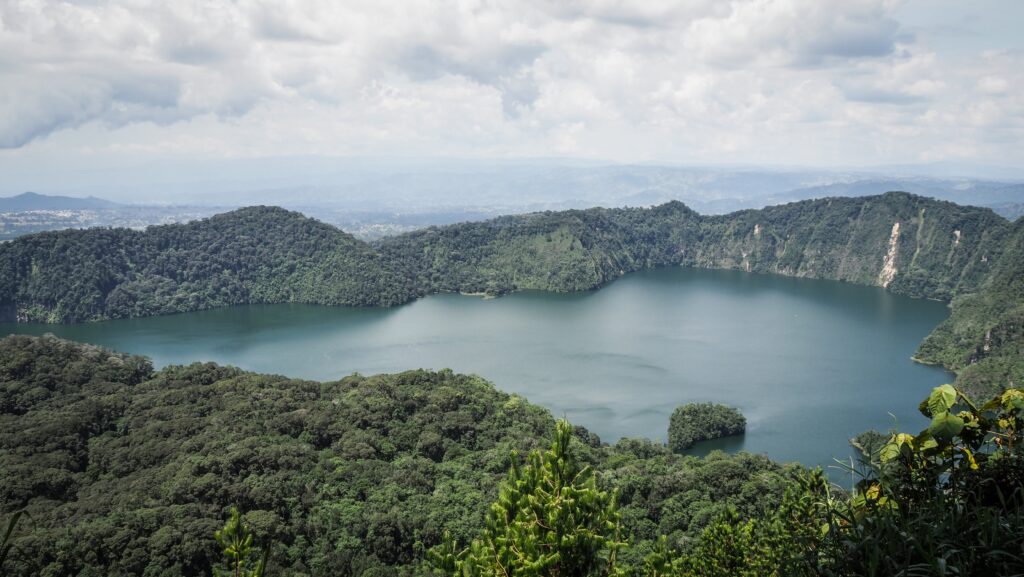
The panorama of the caldera lake was truly magnificent. There was a sign claiming that it’s possible to take a trail down to the lake shore but it seemed to be super steep. We looked for an alternative and walked for about 15 minutes following the ridge, but then we decided to turn back as the path got more rough.
Once we came back to the motorbike, of course, the “rangers” magically appeared to collect the entrance fee. Well, the view was worth it even though the entrance fee was way too high (30.000 TZS). Unfortunately, it’s a common rip-off for white tourists in Tanzania. I always try to negotiate the price and usually they agree but at that time they were quite tough.
We set off to Mbeya and then I asked the rider to take me to one more place: The Great Rift Valley View Point. It’s about half an hour out of town, following the road B345. The ride was very scenic with many turns and my buddy was riding very carefully which I highly appreciated. There was small fee to enter the viewpoint (5.000 TZS – don’t let them trick you into paying more) from which I could see impressively wide open space of the Rift Valley. Another cool things is that to get there, you need to pass the highest point of all trunk roads in Tanzania.
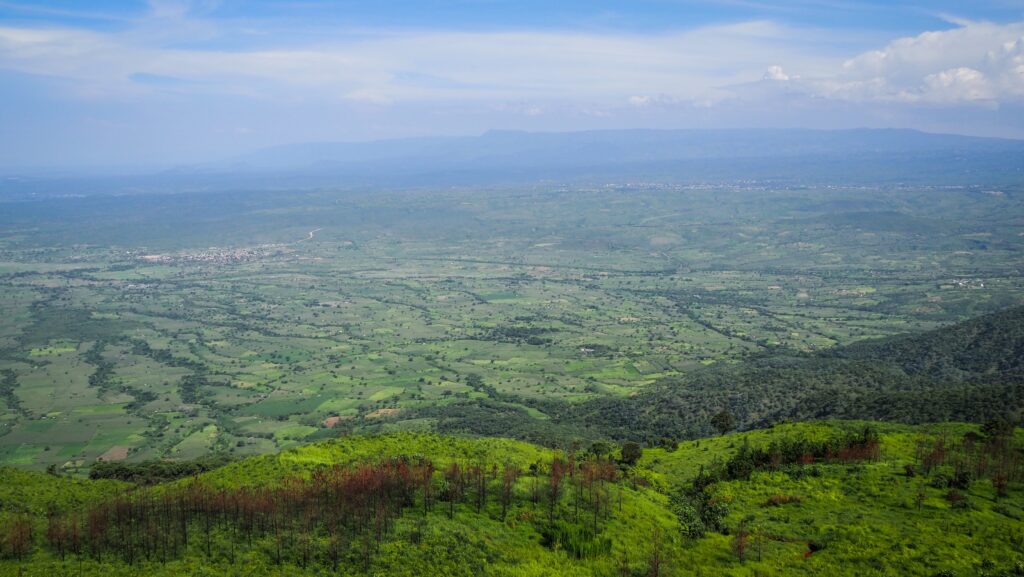
I ended the day with a hike to the Cross Of The Summit which is a hill on the suburbs of Mbeya. The start is near the Desderia Hotel and it takes approximately one hour. The trail is not always clear so download offline map on Mapy.com and follow power lines to the peak. A beautiful panorama of Mbeya can be soon from there.
What to see around Tukuyu
I have done all the activities around Tukuya with a very friendly local guide and ranger: Ridhiwani Gambalela. He had a car, so it was easy to get around and the price for trips was very reasonable and always negotiable. He also has a lot of connections in town so helped me to organize a guide to Mount Rungwe. Here is his WhatsApp number: +255 766 849 317.
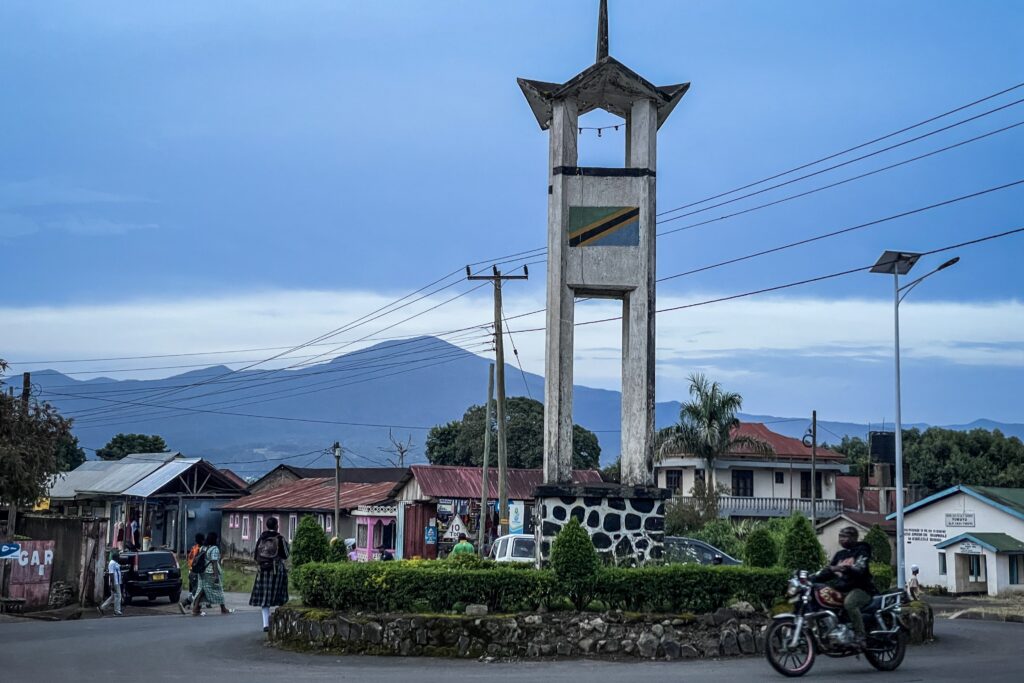
Climbing Mount Rungwe
I had a toast with egg for breakfast at the hotel and then Ridhiwani arrived. First, we went to the gas station to refuel his car to make it to the beginning of the trail and back, and then drove towards the mountain, picking up my Meike and buying some snacks. Maike was a friend of Rindhiwani and on that day he was my hiking buddy and a guide. Once we arrived at the trailhead, there was no one else around see we set off.
The trail was mostly in the forest and we were able to spot some monkeys. Unfortunately, there were so many flies that we couldn’t let us stop even for a minute. We were walking with tree branches in our hands, trying to get rid of them. The trail was climbing up gradually and it was quite easy to follow.
When we were close to the summit, the landscape became more open and the flies immediately disappeared so we could enjoy the views and eat some snacks undisturbed. I felt a bit tired but probably this was the result of walking without breaks. So yeah – do not forget insect repellent. We had one and sprayed ourselves thickly but even then the flies were all around.
After about half an hour at the summit, we decided to start walking back as we could dark clouds on the horizon and we heard first thunder. The way down felt quite long and monotonous. The flies were driving me nuts again!
Once we finished, we had to wait about 45 minutes for Rindhiwani to come and pick us up. It started raining and became very windy. Luckily, there was a building in which we could find a cover. We finished the hike just in time!
We hiked to the top following the so-called Sukuya Route and I paid 40 USD + some extra shillings for gas to the car.
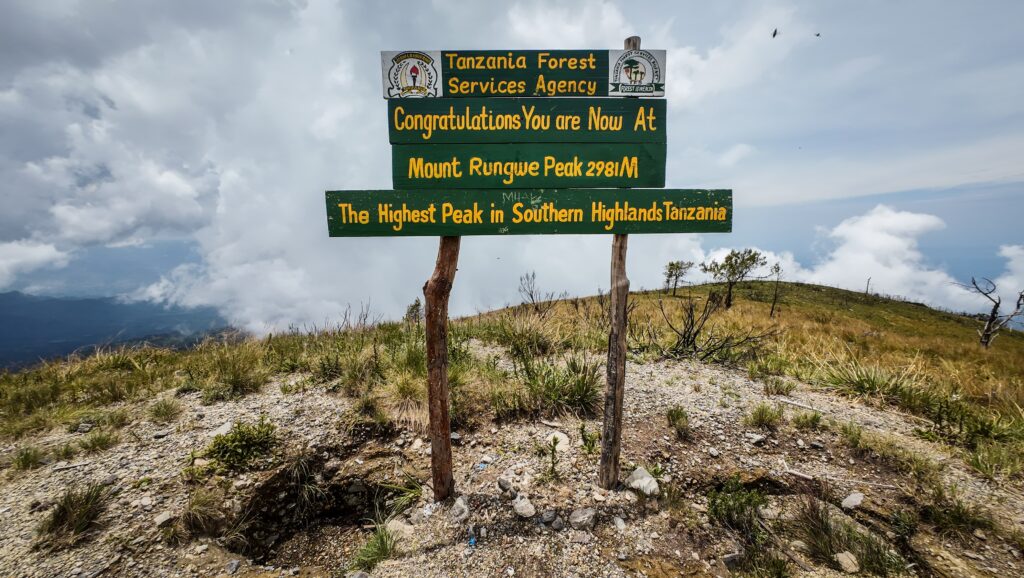
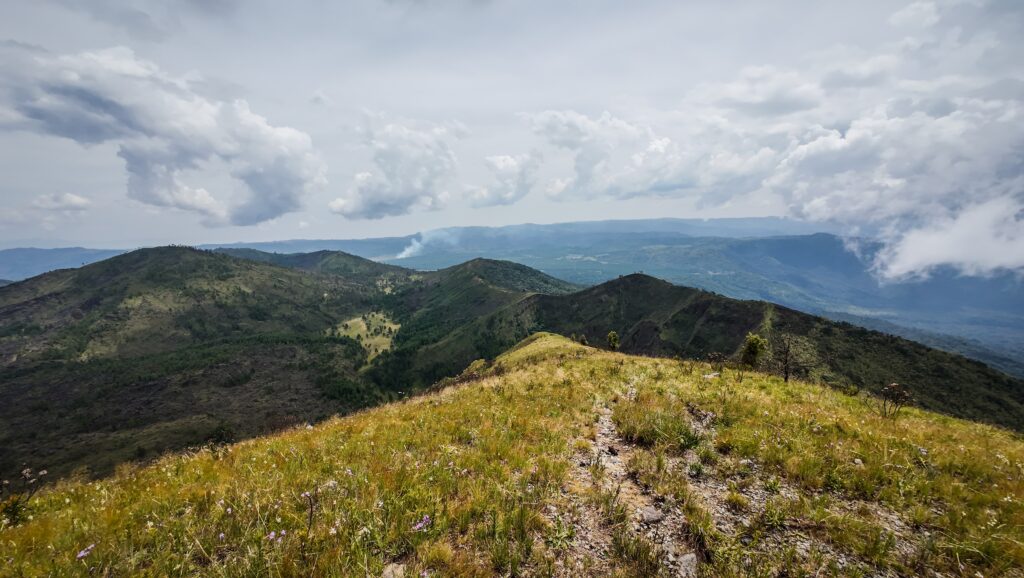
Kapologwe Waterfall
After claiming Mount Rungwe, we decided to visit one more place—a waterfall. At some point, the road turned out to be terribly muddy, and instead of driving, we were sliding. At some point, a local guy heading in the opposite direction told us that he didn’t recommend continuing as we might get stuck. Instead, we parked the car on a roadside and continued on foot.
It took us about 40 minutes one way, and the walk was very scenic. We passed an agricultural area and a local village, where I was charged a 10.000 TZS entrance fee to the waterfall. The mud was all over my shoes, and it felt like they weighed one kilogram more each.
The waterfall was really cool and first, we discovered the cave behind it. It is possible to camp there which must be an amazing experience! Then, we went down to see the waterfall from the front.
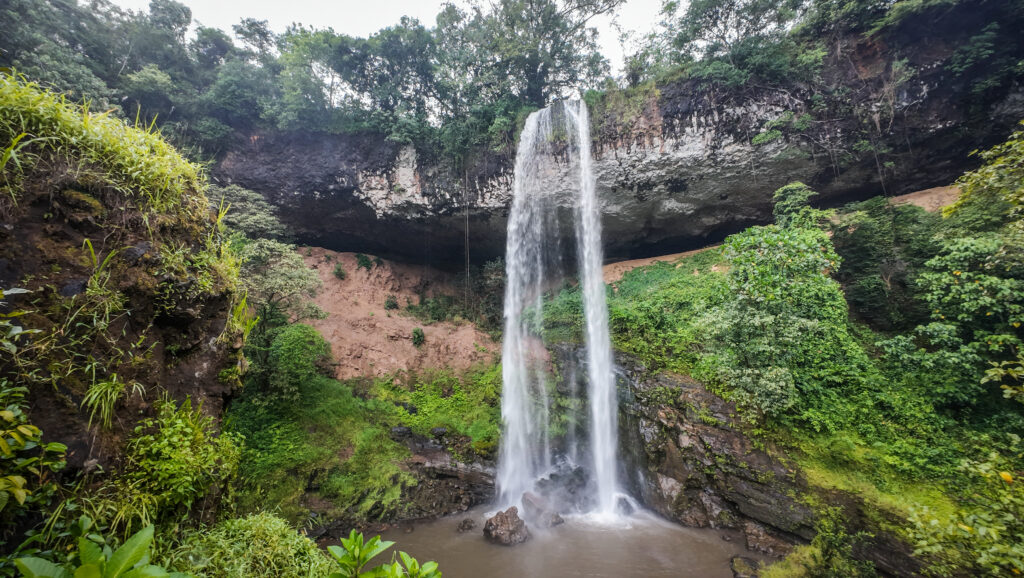
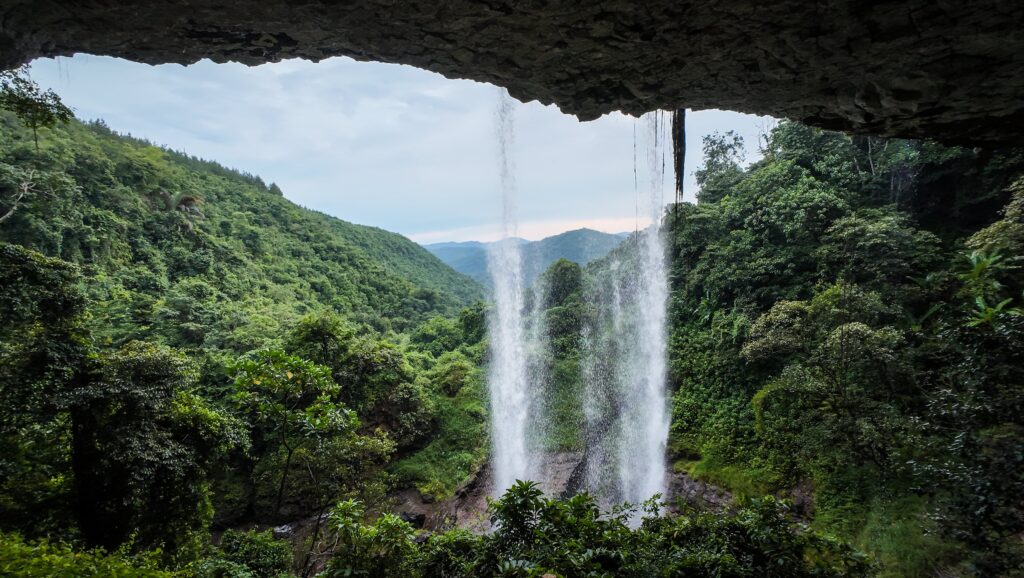
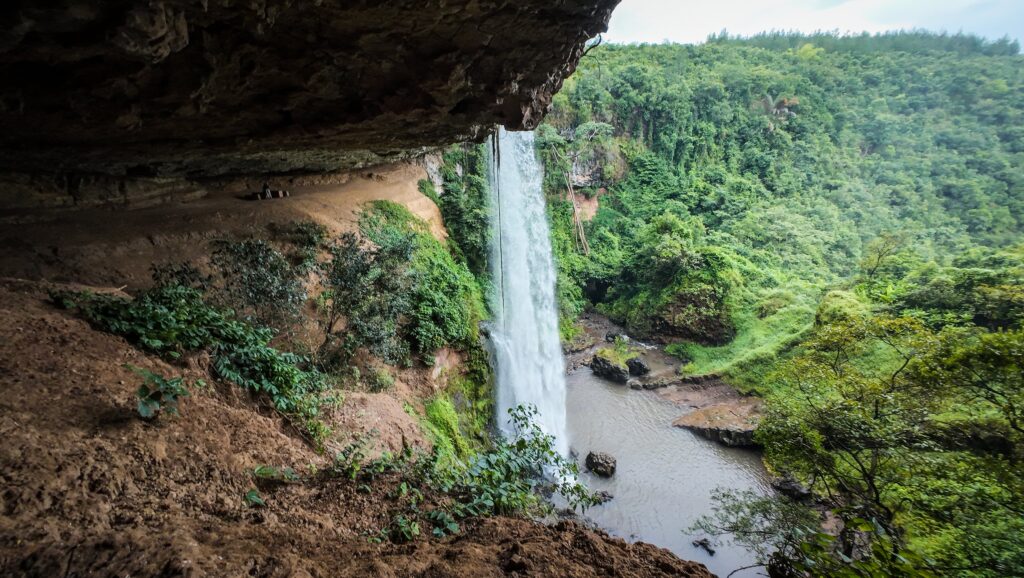
Kiwira God’s Bridge
A natural rock formation located which is basically a huge stone arch that spans across the Kiwira River, looking almost like a man-made bridge, but it was formed naturally over time by the movement of water and erosion.
The bridge is surrounded by lush greenery, waterfalls, and dramatic cliffs, giving the whole area a very mystical and breathtaking feel. Local stories and legends say the bridge was created by a divine act, which is why it’s called “God’s Bridge.” Some even believe it’s a sacred place.
The site isn’t super developed for tourism yet, so it feels very wild and untouched.
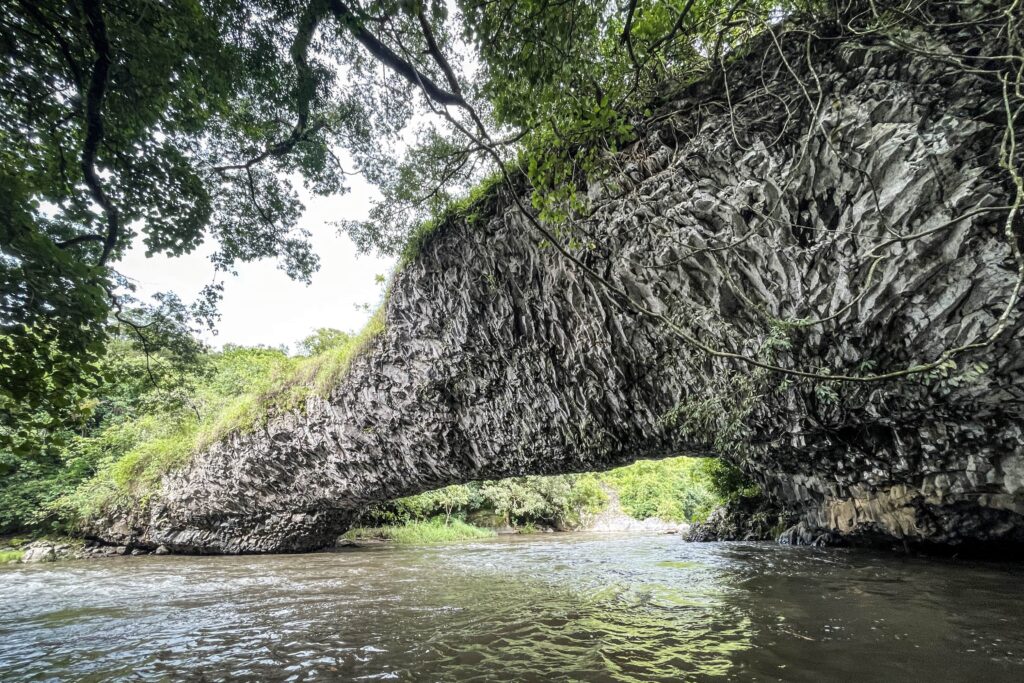

Isabula Waterfall
Another nice waterfall in the region but it is not easy to find the way down. It’s deep and the stream is strong so be careful if you case of swimming.
Crater Lakes
In the Tukuyu area of southern Tanzania, there are several beautiful crater lakes formed by ancient volcanic activity. This region, part of the broader Mbeya highlands, is geologically active, with old volcanoes and fault lines shaping the landscape. Over time, some volcanic craters filled with rainwater and groundwater, creating deep, clear lakes surrounded by lush greenery and steep crater walls.
Some of the well-known crater lakes around Tukuyu include Lake Ngozi which I already described above. However, there are also smaller crater lakes like Kyungululu, Masoko, Ikapu, Kingili or Itende. These lakes are typically very clean and have important local cultural or spiritual significance. Many locals believe the lakes are sacred or have mysterious qualities.
Kitulo National Park
Kitulo National Park is a protected area, covering about 413 square kilometers. It’s perched at around 2,600 meters above sea level, between two mountain ranges called the Kipengere and Poroto Mountains. The park is famous for its rich variety of wildflowers and plants, especially orchids, which explode into color during the rainy season from November to April.
Nicknamed “The Garden of God,” Kitulo is unique because it was the first national park in tropical Africa set up mainly to protect its plant life. Over 350 species of plants grow there, and it attracts botanists, hikers, and nature lovers, especially when the meadows are in full bloom.
Beyond the flowers, Kitulo also has forests like the Livingstone and Ndumbi Forests. These areas are home to rare animals like the Kipunji monkey, some small antelopes, and even unusual birds like the blue swallow and Denham’s bustard. Big predators are rare, so it’s more about scenery, hiking, and birdwatching than traditional safari animals.
Access to the park usually starts from Mbeya city, and a four-wheel-drive vehicle is often necessary, especially during the rainy months. Visitors can stay in nearby towns or camp inside the park. The best time for flower lovers is during the rainy season, while dry months are better for trekking.
It’s possible to cut the costs and go without a private car, but it requires some planning and more time. You can take a local bus or dala-dala from Mbeya to Matamba, the nearest village to the park. From there, you can usually find motorcycle (boda-boda) riders willing to take you to the park entrance.
Keep in mind that Kitulo is a vast plateau, and without your own transport inside the park, exploring can be challenging. If you’re mainly interested in hiking and enjoying the flowers, a boda-boda can drop you off at a trailhead, but arranging a return ride in advance is essential.
Matema
A small but historically and culturally rich town located on the northern shores of Lake Nyasa (also known as Lake Malawi). It’s known for its beautiful lakefront setting, sandy beaches, and surrounding green mountains, which give it a peaceful and almost untouched vibe compared to more urbanised areas.
Read more HERE.
